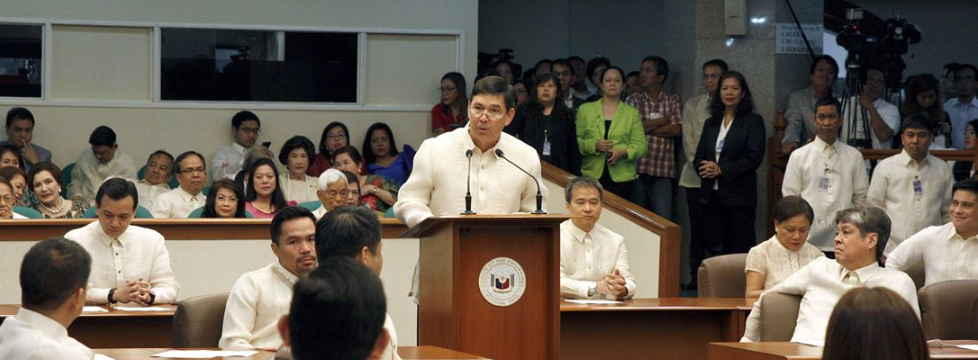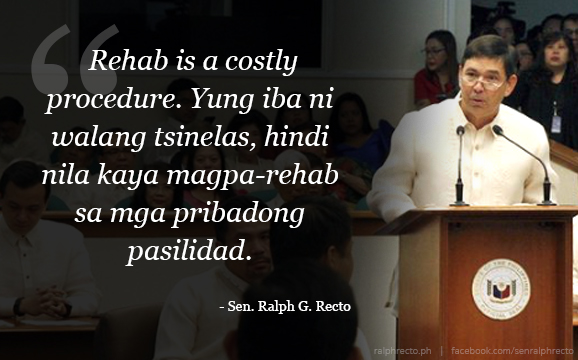For lack of rehab centers, it will take 200 years to treat all addicts – Recto
There are 1.3 million drug addicts in the country today, 600,000 have reportedly surrendered to authorities, but the total number of beds in all government and private drug rehabilitation centers in the country is only 3,216.
Worse, seven, or almost half, of the country’s regions do not have a government rehabilitation center.
Senate Minority Leader Ralph Recto underscored this huge gap between drug dependents and treatment facilities in calling for the setting up of more state-run treatment centers for substance abuse.
He warned that if the number of rehabilitation centers will remain the same, “it will take 200 years to rehabilitate all the drug dependents.”
For the 600,000 who had surrendered, it will take almost a century to finish treating them all, Recto added, using as his basis the six-month period before a dependent “graduates” from treatment.
The Dangerous Drugs Board estimated the number of “dangerous drugs users” at 1,292,752, the figure indicated in the 2016 national budget as the national prevalence of drug use which must be cut.
Not only is there a “national shortage” in drug rehabilitation facilities, there’s a funding lack too, Recto said.
He revealed that the P635 million budget this year of the Department of Health (DOH) for the operation of its drug abuse treatment and rehabilitation centers “can only help a small fraction of the drug addict population.”
“That funding level was based on the projected normal volume of patients. It did not factor in the tens of thousands of dependents who surrendered to authorities in the hope that they will be helped in weaning themselves of their vice,” Recto said.
Rehabilitation, he said, must always be “a companion measure” of an anti-drug abuse drive. “The expansion of the drug wars must trigger the expansion of our drug rehabilitation system.”
At present, Recto said the total number of beds in government-run treatment centers is 1,670. The rest, or 1,546, are in private- or NGO-run facilities.
The existing ratio of government treatment slots to addicts means that there are 778 would-be patients competing per one bed, Recto said.
“Sa Metro Manila, wala pang 900 beds ang available, mapa-gobyerno man o pribado,” Recto said.
“Sa buong Mindanao, meron lang 315 beds. Imagine having just 315 beds in an island of 23 million,” he added.
The number of government centers, he stressed, must be increased “because the poor cannot afford the price of admission charged by some private facilities.”
“Rehab is a costly procedure. Yung iba ni walang tsinelas, hindi nila kaya magpa-rehab sa mga pribadong pasilidad,” he said.
By Recto’s research, there are only 42 drug rehabilitation centers in the country today. Of this, 14 are government, 25 private. Three are reckoned as “non-residential centers.”
There are DOH- accredited public and private rehab centers in NCR, Regions I, III, IV-A, V, VI, VII, X, XI and Caraga, leaving Regions II, CAR, IV-B, VIII, IX, XII, and ARMM without.
Government-run rehab centers, meanwhile, can be found in NCR, Regions I, IV-A, V, VI, VII, X, XI and Caraga, and none in Regions II, CAR, III, IV-B, VIII, IX, XII, and ARMM.
“Due to popular demand, Malacañang should plan the construction of rehabilitation centers in these regions,” Recto said.



